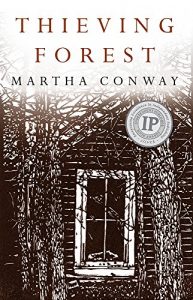Stuck in the Squishy Middle
This blog series, Unstuck, explores some of the ways fiction writers find themselves stuck and offers tips from successful writers for getting unstuck.
Unstuck is a six-month series published the first Monday of the month.
Read the previous installments:
WRITING THE BEGINNING OVER AND OVER
Stuck in the Squishy Middle
By Martha Conway
We’ve all been there: we’re reading a novel, it’s moving right along, when gradually the momentum slows and we find that we are, well, bored. It’s taking too long to get to the point. The novel seems to be drifting.
When you are the one writing the novel it’s even worse. It’s not quite time for everything in the story to build to a climax but we’ve finished setting the stage. We hope we’re not being boring—but are we? The characters that seemed so pivotal before are now languishing in lackluster scenes.
How do we regain the story’s momentum? Or—more importantly—our own motivation?
Finding Inspiration
- Make sure to “touch” your manuscript every day, even if you’re discouraged.
Don’t let the world of your story grow dim, especially if you’re unsure where to go next. Read over your previous scenes and tweak a few sentences. If you are having a hard time getting (or even looking at) sentences on the page, spend time thinking about your characters and their troubles. You can do this anywhere—doing dishes, in the shower, or when you’re taking a walk. As St. Augustine famously stated, Salvator ambulado. It is solved by walking.
- Do more research.
 Most of my novels are set in the past, so I definitely use research as a means of inspiration. A description of a meal or the contents of a theatre trunk can give me ideas. But even if your novel is set in the time and place where you live, you can still use research to inspire you. Take a walk in a neighborhood you don’t normally go to and write down your observations (be sure to include all your senses, not just sight).
Most of my novels are set in the past, so I definitely use research as a means of inspiration. A description of a meal or the contents of a theatre trunk can give me ideas. But even if your novel is set in the time and place where you live, you can still use research to inspire you. Take a walk in a neighborhood you don’t normally go to and write down your observations (be sure to include all your senses, not just sight).
If your story’s location is not where you currently live, go to that place and collect fresh details. If you can’t go to that place, spend some time looking at photographs and reading descriptions of it. I once wrote about a huge swamp in northeast Ohio that no longer exists, and I watched YouTube videos of canoe travels in Brazilian swamps for inspiration.
Any of these activities can give you ideas, and if you have an idea you will want to use it. You’ll want to put it on the page.
Nudging the Story Forward
Finding our own inspiration is fine and good, but what if the story itself is to blame? If your instinct is telling you the story has gotten lukewarm, pay attention to that. It’s probably true. The good news is there are lots of ways to restore the heat.
- Consider introducing a minor conflict.
Try creating an action that is a minor league representation of a major league conflict. This has the added benefit of giving your plot—and you—a shot of energy. Many a quidditch match has done just that for J.K. Rowling.
- Use a writing prompt.
When I feel stuck I decide that I am going to do writing prompt exercises for one week. However, it’s important to find the kind of writing prompt that works to inspire your personal creativity.
What works best for me is just to open a novel randomly and pull out a sentence. Sometimes I have to graze a little before I find something that I think can work (I sometimes spend all of two minutes). Here’s an example from The Polish Officer, by Alan Furst:
“Bad Paul, bad Paul.” Traudl von Behr’s eyes glowed with admiration.
Taking that as a prompt, I then write my own short piece, using a character who says one thing but whose physical appearance suggests something else.
- Create a reverse outline.
 Alice K. Boatwright, bestselling author of the Ellie Kent mystery series, introduced this concept to me:
Alice K. Boatwright, bestselling author of the Ellie Kent mystery series, introduced this concept to me:
When I am in the middle of a book and feel I have lost my sense of direction or forward motion, I stop and make a “reverse outline.” That is, I outline what I have written rather than what I intend to write.
To make the reverse outline, I scroll through the whole manuscript, noting down the chapter numbers, the inclusive page numbers for each chapter, and a few key points about what currently happens in that chapter. This helps me to get an aerial view of the whole book. It also helps me to track character arcs, main points of action, and any other details I am worrying about – changes in point of view, the appearance/disappearance of characters, missing events, and even where I’ve bogged down. I also get clarification about what happens next. The process of doing this gets me moving again and helps me see where I’m going.
The reverse outline is a useful tool when you want to get an overview of your book’s structure as it currently stands. And that, in turn, can help you understand where the story can go from here.
Still stuck? The problem may be that your plot has come off the track, and you have to reverse a little to correct your direction. Here’s a handy tool for diagnosing that:
- Apply the “Therefore/But” test to your scenes.
This tool was used by the creators of South Park to check whether each scene either is set up by a scene before it (“…therefore”), or introduces a new obstacle (“but …”). When a scene answers yes to one or both, it feels integrally connected to the whole. And if it doesn’t, it may just be a pretty piece of writing that needs to be cut. Whether you are writing a literary novel or a whodunit, this test can be a handy tool.
It’s a Fact: Evolving Stories Are Messy
The squishy middle is sometimes called the mushy middle, but I think it should be called the messy middle. There is a point in every book I’ve ever written when the whole thing feels like an unholy mess. But strangely enough, this is as it should be.
As you write about characters and situations and ideas, they change. New ideas creep in. Characters on the page are different than what you’d envisioned. (Sometimes a lot different!) The world you are creating is not exactly the world you thought you would create, and at some point (usually right in the middle) you must commit to this new world and give up the one that seeded it.
As Jane Smiley has stated, “When writing the first draft, the writer has had to be receptive to the world and the feelings that inspired him; when beginning to revise, he must be receptive to what has already been written.”
When I am ready to revise I can examine the new world of my story and tighten it into a cohesive whole. But until then I must find a way to keep writing to the end, with faith and tenacity.
—
 Martha Conway is the author of The Floating Theatre (The Underground River in the U.S.), which was a New York Times Book Editor’s Choice. She teaches creative writing for Stanford University’s Continuing Studies Program. This month she is giving away her Collection of 150 Writing Prompts to all new subscribers to her newsletter.
Martha Conway is the author of The Floating Theatre (The Underground River in the U.S.), which was a New York Times Book Editor’s Choice. She teaches creative writing for Stanford University’s Continuing Studies Program. This month she is giving away her Collection of 150 Writing Prompts to all new subscribers to her newsletter.
Alice K. Boatwright is the author of the award-winning Ellie Kent mysteries, as well as literary fiction, including Collateral Damage and Sea, Sky Islands; and numerous short stories published in journals such as Calyx, America West, Mississippi Review, and Stone Canoe. For more information, visit http://alicekboatwright.com or https://www.amazon.com/Alice-K-Boatwright/e/B00BKXWD9C/.
Category: Contemporary Women Writers, How To and Tips

























Great article. I’ve used that reverse outlining technique, but called it my dirty outline. I’m at that point in my current WIP. It’s time to fly over the top of it to see where it’s going.
Thanks, Jeanne! Love the name “Dirty Outline.” This of idea of flying over the top of your manuscript as it is, to get a better view, seems very productive. I’m adding it to my box of tools.